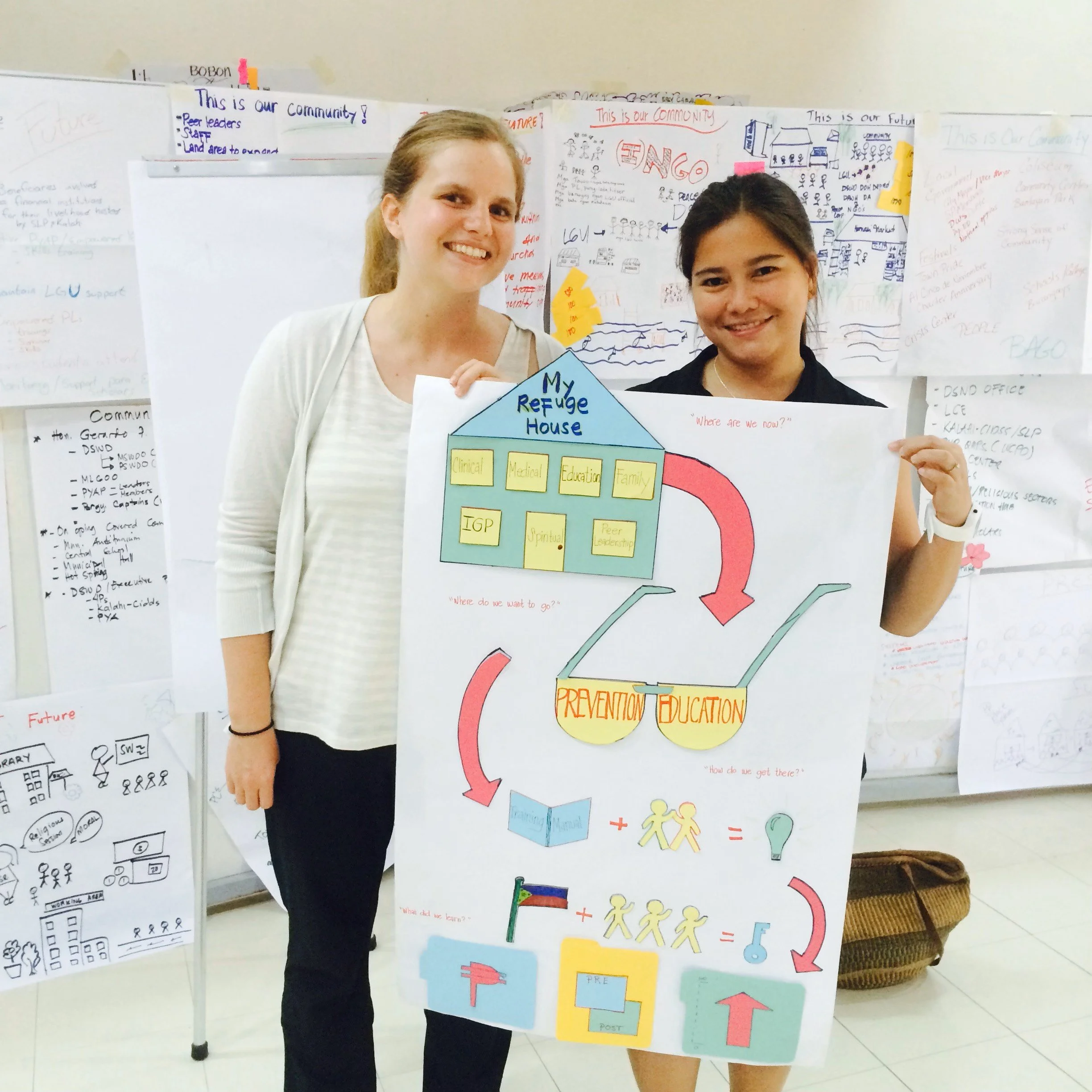Strategy: How?
The Art of Strategic Collaboration: Lessons from a Decade-Long Partnership
Strategy is a cornerstone of design that I often find challenging to write about. Despite its central role in what I do, conveying its essence in an engaging way seems elusive. Strategic thinking and planning have always captivated me, a passion that ignited during my time as a Peace Corps volunteer. It was there, through the Project Development and Management (PDM) training, that I discovered a profound connection to strategic planning.
Before that, my journey in macro social work had left me searching for the right tools and methods. The training was like finding a missing piece—a way to synthesize my educational background, experiences, and interests into something tangible and actionable. It provided the framework to think big picture, narrow down ideas, and organize goals into structured action plans. It was a perfect blend of my logical and creative sides, a convergence of big ideas and detailed plans, research and conversation, dreaming and thinking.
Even now, I continue to use the strategic planning toolkit I developed over a decade ago (you can find it linked in the resources tab). Yet, despite my deep engagement with strategy, writing about it remains a challenge. I aim to share tools, resources, and personal anecdotes about what has worked for me and what hasn’t. While I find the process enjoyable, I acknowledge that writing about it can be less engaging than the process itself. But it's a skill I’m committed to developing for this blog and future book.
A Transformative Experience
Eight months into my time in the Philippines and five months into working with my counterpart, Rose Ann, we traveled outside Manila for PDM training. The training was designed for volunteers who had spent enough time in their communities to start developing programs with their organizational partners. For Rose Ann and me, this training was pivotal—it solidified our friendship and shaped our professional paths.
During that weekend, we learned invaluable lessons, and our project plan from nearly a decade ago is still in operation today, having evolved beautifully over the years. I continue to use and expand upon the framework we developed, integrating new models like human-centered design. Our successful collaboration was built on several key factors:
Complementary Work Styles: Rose Ann’s drive and my reflective thinking created a balanced dynamic. She kept things moving forward with her ideas, while I delved deeper with questions.
Mutual Respect: We respected each other's ideas and questions, allowing us to brainstorm and bounce ideas off one another without criticism.
Shared Commitment: We both exhibited “only student in the group project” energy, trusting each other to carry their weight.
Valuing Each Other’s Contributions: We recognized and appreciated the unique value each of us brought to the table.
Consensus Building: We discussed topics until we reached a consensus, leveraging our strong personalities without overshadowing one another.
Balance strengths and weaknesses: We recognized our own strengths (geniuses) and created space to support the other. Rose Ann noted that while she struggles to articulate her thoughts, my strength in this area has complemented her well. For me, Rose Ann has an “achiever” drive that forces me out of my head and to take action.
These factors made our professional relationship thrive and continue to do so. A decade later, Rose Ann remains my best collaborator. We have monthly check-ins to discuss life and work, understanding the rare and valuable relationship we share in brainstorming and problem-solving.
Finding Your Collaborators
My primary piece of advice for strategy (and design in general) is to find your people. Build relationships that foster collaboration and provide a strong foundation for addressing programmatic or organizational questions. When you find such individuals, cherish and maintain these connections, even if your paths diverge.
I have collaborated with many individuals since working with Rose Ann, but she remains my go-to person. Our chemistry and flow are rare and precious. Even with a significant time difference, Rose Ann is indispensable for feedback and ideas.
Conclusion
The experience and lessons from working with Rose Ann have profoundly shaped my career. Finding someone who complements and matches your strengths is rare, and when you do, hold on to them. Such collaborations are invaluable, offering support and insight that can significantly enhance your work.

